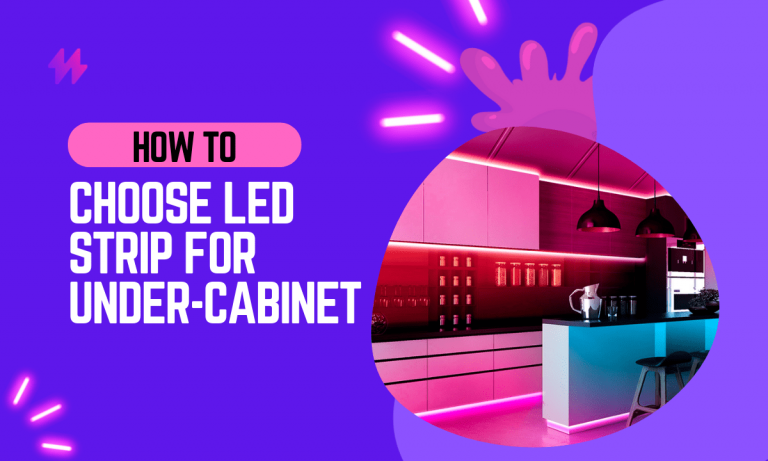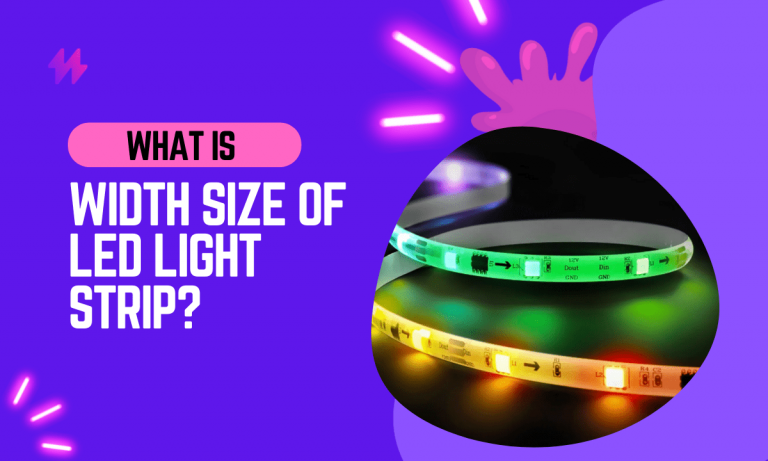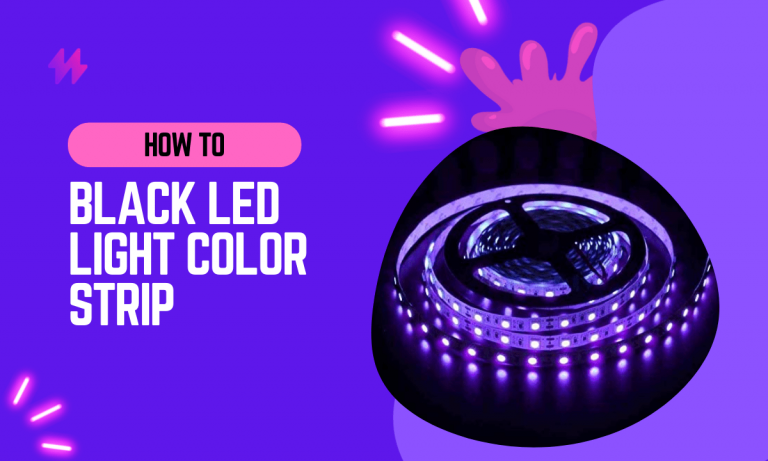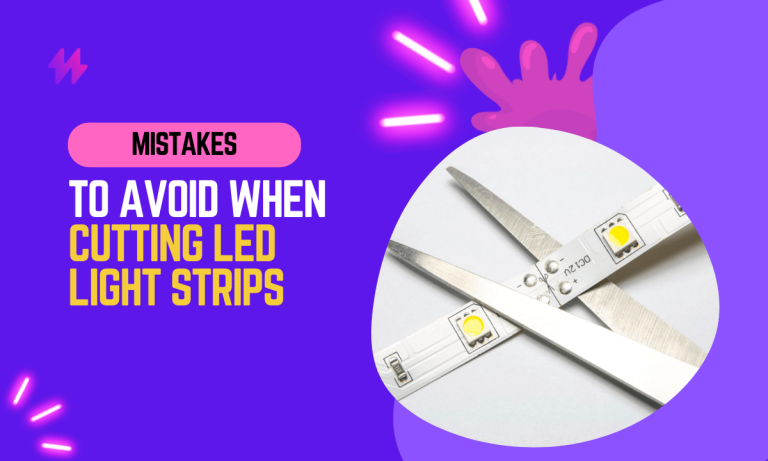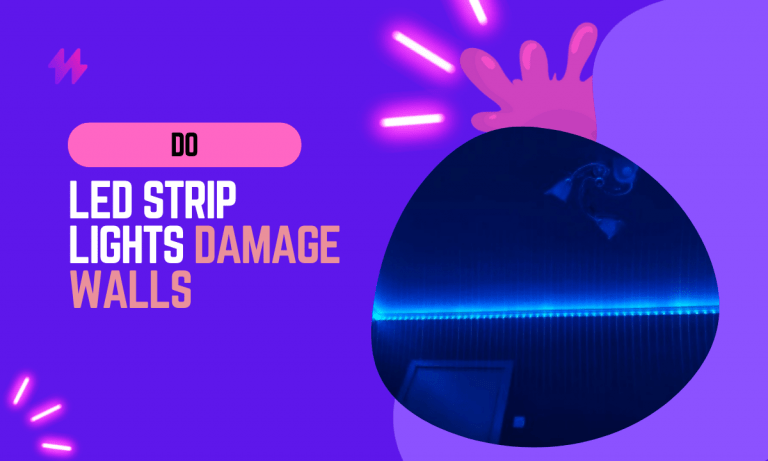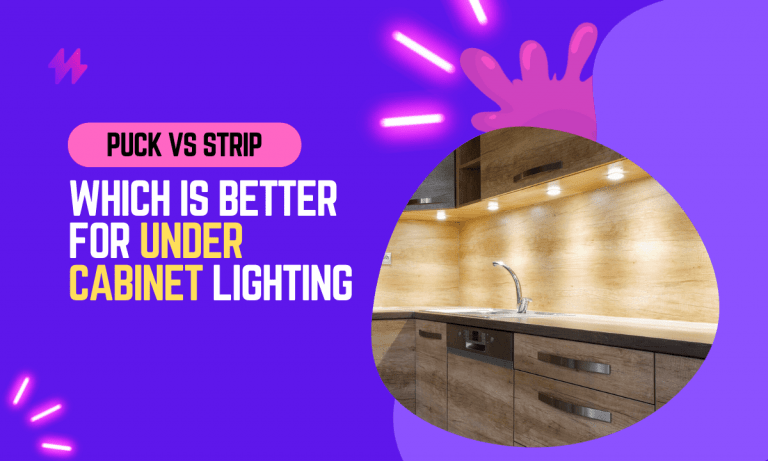How to Power LED Strip Lights with Batteries?
If you’re looking for a way to power your LED strip lights without having to run an extension cord across the room, you’re in luck. In this article, I’ll show you how to power LED strip lights with batteries.
I’m a LED Light Technician with 10 years of experience, and I’ve helped countless people solve this problem. In this article, I’ll share my knowledge with you so that you can power your LED strip lights without any hassle.
So, what are you waiting for? Let’s get started!
How To Power LED Strip Lights With Batteries
LED strip lights are a popular choice for lighting up everything from under-cabinets to home theaters. They’re easy to install, and they come in a variety of colors and brightness levels. But what if you don’t have access to an outlet? Or what if you want to use your LED strip lights in a remote location?
In this article, we’ll show you how to power LED strip lights with batteries. We’ll cover the different types of batteries you can use, how to connect them to your LED strip lights, and how to troubleshoot any problems you may encounter.
Types of Batteries
The most common type of battery used to power LED strip lights is the AA battery. AA batteries are small and lightweight, making them easy to transport. They’re also relatively inexpensive, so they’re a good option for budget-minded projects.
Another option is to use a D battery. D batteries are larger and heavier than AA batteries, but they also have a higher capacity. This means that they can power your LED strip lights for longer periods of time.
If you need a battery that can power your LED strip lights for an extended period of time, you can use a lead-acid battery. Lead-acid batteries are larger and heavier than AA or D batteries, but they can also hold a charge for much longer.
Connecting Batteries to LED Strip Lights
To connect batteries to your LED strip lights, you’ll need a battery pack and a wire. The battery pack will provide the power to your LED strip lights, and the wire will connect the battery pack to the lights.
Most battery packs come with a set of terminals. You can connect the positive terminal of the battery pack to the positive lead of your LED strip lights, and the negative terminal of the battery pack to the negative lead of your LED strip lights.
If your battery pack doesn’t have terminals, you can use a wire to connect the positive and negative terminals of the battery pack to the positive and negative leads of your LED strip lights.
Troubleshooting
If your LED strip lights aren’t working, there are a few things you can check. First, make sure that the batteries are properly connected to the LED strip lights. Second, check the voltage of the batteries. The voltage of the batteries should match the voltage of the LED strip lights. Third, check the polarity of the batteries. The positive terminal of the battery pack should be connected to the positive lead of the LED strip lights, and the negative terminal of the battery pack should be connected to the negative lead of the LED strip lights.
If you’ve checked all of these things and your LED strip lights still aren’t working, you may need to replace the batteries.
Conclusion
Resources
[How to Power LED Strip Lights with Batteries](https://www.101led.com/how-to-power-led-strip-lights-with-batteries/)
[The Best Batteries for LED Strip Lights](https://www.ledsupply.com/blog/the-best-batteries-for-led-strip-lights/)
[How to Connect Batteries to LED Strip Lights](https://www.ledlightsdepot.com/blog/how-to-connect-batteries-to-led-strip-lights/)
FAQs
How do I power LED strip lights with batteries?
There are a few different ways to power LED strip lights with batteries. The most common way is to use a battery pack that is specifically designed for LED strip lights. These battery packs typically come with a built-in charger, so you can simply plug them into an outlet to charge them up. Once the battery pack is charged, you can connect it to your LED strip lights and they will be powered on.
Another way to power LED strip lights with batteries is to use a 12-volt battery. This type of battery is often used in cars, so you can find them at most auto parts stores. To use a 12-volt battery, you will need to purchase a battery connector that is compatible with your LED strip lights. Once you have the battery connector, you can simply connect it to the battery and then connect the other end of the connector to your LED strip lights.
What type of batteries do I need for LED strip lights?
The type of batteries you need for LED strip lights will depend on the length of your LED strip lights and the brightness of the lights. For shorter LED strip lights, you can use a small battery pack that is specifically designed for LED strip lights. For longer LED strip lights, you may need to use a larger battery pack or a 12-volt battery.
How long will my LED strip lights last on batteries?
The battery life of your LED strip lights will depend on the length of your LED strip lights, the brightness of the lights, and the type of batteries you are using. Generally speaking, you can expect your LED strip lights to last for several hours on batteries. However, if you are using a long LED strip light or if you have the lights set to a high brightness, you may need to change the batteries more frequently.
How do I charge my LED strip lights with batteries?
If you are using a battery pack that is specifically designed for LED strip lights, you can simply plug the battery pack into an outlet to charge it up. Once the battery pack is charged, you can connect it to your LED strip lights and they will be powered on.
If you are using a 12-volt battery, you will need to purchase a battery charger that is compatible with your battery. Once you have the battery charger, you can simply connect the battery to the charger and it will start to charge.
What are the benefits of using batteries to power LED strip lights?
There are a few benefits to using batteries to power LED strip lights. First, batteries are a portable power source, so you can use them to power your LED strip lights anywhere you want. Second, batteries are silent, so you won’t have to worry about any noise from the power source. Third, batteries are relatively inexpensive, so they can be a cost-effective way to power your LED strip lights.

